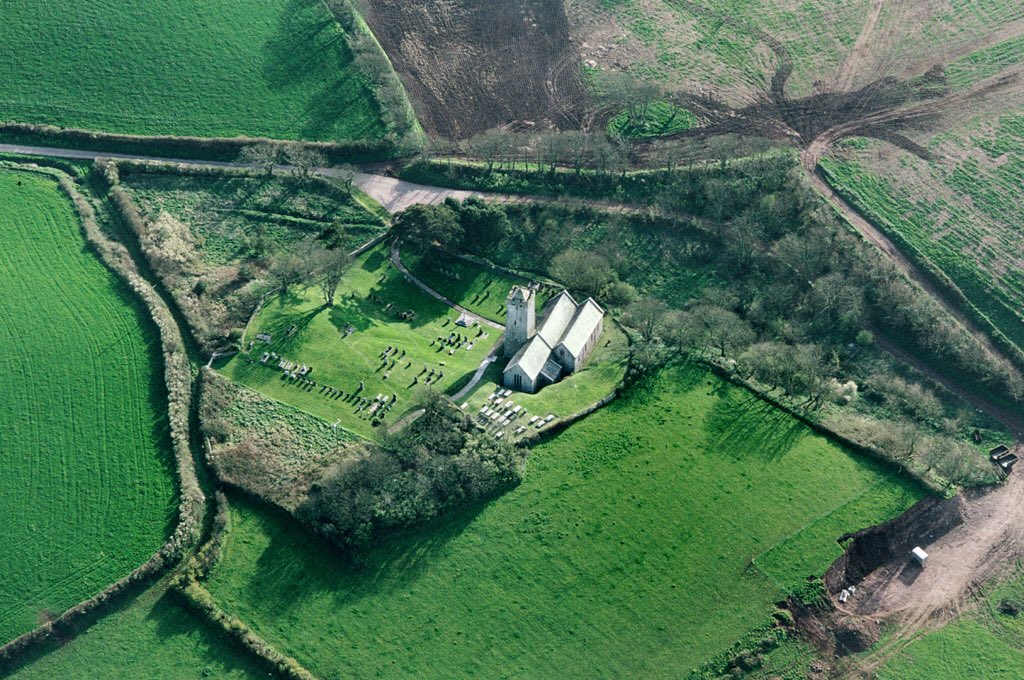
The church at Castlemartin cuts into a steeply sloping rock bank. Perhaps the proximity to a stream and two holy wells gave this site spiritual significance... Or perhaps, nestled in a tree-lined hollow, it offered invisibility from marauders coming from the sea...
#thread
#thread

This Pembrokeshire site is encircled by earth-banked encampments, possibly prehistoric, and an ancient burial mound, while several early pilgrim paths lead to the church. A 7th-9th century carved cross was found in the churchyard in 1922, but hasn't been seen for decades...
2/
2/

Architecturally, we can place the church in the late 12th century when the parish enjoyed wealth and status due the abundance of fertile, lime-rich soil in which crops thrive. The massive scalloped font and north arcade are the oldest visible remains of this early church.
3/
3/

The small carved faces on the arcades are described as having “a death-like appearance, with closed eyes and shrunken noses and lips.” It is interesting that these masks face north – traditionally the dark or ‘devil’s side’ of the church and could be figures of protection.
4/
4/

The 15th and 16th centuries brought much change to the church: the north and south chapels were removed, as was the north transept. Pre-Restoration sketches also indicate the presence of a west porch of Jacobean character of such size than it more resembled a chapel.
5/
5/

The 2nd Earl of Cawdor paid for the restoration of the church in the late 1850s. The church was re-roofed, re-floored and re-fenestrated, the vestry was added, and doorways rebuilt. As a legacy, encaustic tiles emblazoned with the Cawdor arms decorate the chancel floor.
6/
6/

In the early 20th century, most of the land in Castlemartin - 6,000 acres to be precise - was cleared by the government for use as an artillery range. The church closed in 2016 and was a bit of a milestone for the Friends, being the 50th church we adopted!
7/7
7/7

• • •
Missing some Tweet in this thread? You can try to
force a refresh

















